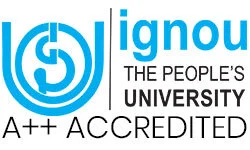Tourism during the Festive Season in Nepal
Nepal is a beautiful country located in South Asia bordered by India in the South, East and West directions and China towards the North. Although Nepal is a small Land-Locked Developing Country (LLDC), it encompasses a beautiful labyrinth of geographical variation and social cultural diversity. It is one of the most beautiful countries in the world. Tourism is one of the major economic sectors of Nepal. Revenue from the tourism sector contributes to a substantial proportion of the national GDP of Nepal. The development of the tourism sector will have a pivotal role in transforming the development dynamics of the country.
Nepal’s tourism is majorly based on mountaineering, trekking, adventure activities, wildlife, cultural and religious tourism, among others. The diverse ethnic composition and different niches of tourism activities make Nepal one of the most popular destinations in the world.
There are mainly two tourist seasons in Nepal in terms of natural tourism mainly during February to May and September to December because the climate is favorable for outdoor and adventure activities. The major festivals of Dashain and Tihar in Nepal also coincide with the later season. Many tourists (both national and international) usually visit different towns and villages during this celebratory time. Tourism during the festive season in Nepal is immense. It is the time for families to get together after a long year’s work. Most government and private offices are closed off as a vacation during the peak festive seasons of Dashain and Tihar. This is also the best time to travel in terms of weather because this time around the year panoramic views and sceneries are at the best providing tourists with the best experiences of travel. Another reason to travel during the festive season in Nepal is because travelers can experience religious activities such as visiting temples and shrines. Add to that different food delicacies are prepared in every household creating a unique experience for visitors.
The COVID-19 period saw a rapid decline in the number of domestic and international tourists due to travel and other regulatory restrictions. However with the gradual lift of regulatory restrictions, the tourism sector in Nepal has shown signs of recovery. It is true that a lot of tourism related businesses were shut down and millions of people lost employment but the willingness of both domestic and international tourists to resume travel for leisure and work has definitely had a positive impact on the Nepalese tourism frontier.
One of the major challenges of tourism development in the Nepalese context is the inadequate management of tourism related infrastructures such as airports, road access, accommodation, and other forms of transport. Usually hard to reach tourist destinations are still underexplored at most due to the inadequate provisions of tourism related infrastructure such as roads and transport.
There is a growing demand for human resources in the tourism sector to cater to the needs of domestic and international tourists. There is an increasing gap between the supply and demand for human resources in travel and tourism fields in Nepal. With increased access to information, both domestic and international tourists require professional services related to tourism. In this scenario, hospitality management, travel and tourism management related courses are also in high demand. This type of course (such as MTTM and BTS at ICA) offers learners a greater chance of being employed in the tourism sector in no time. With the increasing number of hotels, restaurants, travel agencies and other tourism related enterprises, the demand for professional human resources in the tourism sector is also rapidly increasing.
 01- 4579685/ 4583902/ 4578471/ 4591485
01- 4579685/ 4583902/ 4578471/ 4591485 support@ica.edu.np
support@ica.edu.np
 9818505224
9818505224


